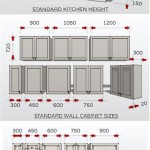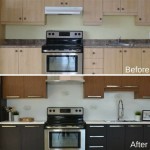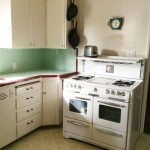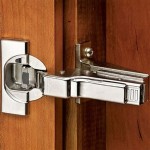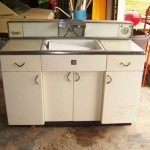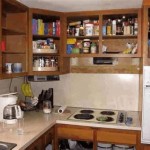What Tools Are Needed To Install Kitchen Cabinets
Installing kitchen cabinets is a significant home improvement project that requires careful planning, precise measurements, and the right set of tools. Utilizing the appropriate tools ensures efficiency, accuracy, and a professional-looking outcome. This article provides a comprehensive overview of the essential tools needed for a successful kitchen cabinet installation.
Essential Measuring and Marking Tools
Accurate measurements are paramount for a seamless cabinet installation. Using imprecise tools or neglecting to double-check dimensions can lead to significant errors and wasted time. This section details the necessary measuring and marking tools.
Measuring Tape: A durable and reliable measuring tape is fundamental. It should be at least 25 feet long to accommodate the dimensions of most kitchens. Look for a tape measure with clear markings and a lock mechanism to hold the measurement in place.
Laser Level: While a traditional spirit level is useful, a laser level provides a more accurate and efficient way to establish level lines across the entire kitchen. It projects a visible laser line onto the walls, ensuring that all cabinets are installed at the same height. This is especially crucial for upper cabinets.
Spirit Level: A spirit level, typically 4 feet in length, is essential for verifying the levelness of individual cabinets during installation. It helps to make minor adjustments and ensure that each cabinet is plumb and level before securing it to the wall.
Stud Finder: Locating wall studs is crucial for securely attaching cabinets to the wall. A stud finder identifies the location of studs behind drywall or plaster. Electronic stud finders are generally more accurate than magnetic ones, but it's always wise to confirm the stud location with a nail or screw.
Pencil: A standard pencil is used for marking guidelines, stud locations, and cabinet positions on the walls. A mechanical pencil can provide a finer line for greater precision.
Straight Edge: A straight edge, such as a metal ruler or a long level, is helpful for drawing straight lines and verifying the flatness of walls. It can also be used to align cabinets during installation.
Combination Square: A combination square is a versatile tool that can be used for a variety of tasks, including marking 90-degree angles, measuring depths, and setting blade heights on power tools.
Essential Cutting and Drilling Tools
Installing kitchen cabinets often involves cutting materials to fit specific spaces and drilling holes for screws and fasteners. Selecting appropriate cutting and drilling tools is vital for achieving clean cuts and secure connections.
Power Drill/Driver: A cordless drill/driver is indispensable for driving screws into studs, cabinets, and other materials. It's recommended to have a drill with adjustable torque settings to prevent stripping screws or damaging the surrounding wood. Consider a drill with multiple speed settings for better control.
Impact Driver: An impact driver is designed for driving screws quickly and efficiently, particularly when working with dense materials or long screws. It delivers rotational bursts of power, making it easier to drive screws without stripping the heads.
Circular Saw: A circular saw is used for making straight cuts in wood or other materials, such as filler panels or toe kicks. A sharp blade is essential for clean and accurate cuts. Consider a saw with a dust collection port to minimize mess.
Jigsaw: A jigsaw is useful for making curved or irregular cuts, such as cutting around pipes or other obstacles. It can also be used for trimming filler panels to fit specific spaces.
Hole Saw Kit: A hole saw kit is necessary for drilling holes for plumbing pipes, electrical wiring, or other fixtures. Choose a kit with a variety of hole sizes to accommodate different applications.
Drill Bit Set: A comprehensive drill bit set should include a range of sizes for drilling pilot holes, driving screws, and creating larger openings. Look for high-speed steel (HSS) or titanium-coated drill bits for durability and performance.
Router and Router Bits: A router can be used to create decorative edges on cabinet doors or trim, or to cut dados and rabbets for joining cabinet components. A variety of router bits are available for different applications. This is often used for more advanced installations.
Essential Installation and Finishing Tools
The final stages of kitchen cabinet installation involve securing the cabinets to the wall, aligning them properly, and finishing the installation with trim and hardware. The following tools are essential for these tasks.
Cabinet Jack or Support System: A cabinet jack is a telescoping support that holds cabinets in place while they are being installed. It frees up your hands and allows you to make precise adjustments to the cabinet's position. Various support systems are available, including adjustable poles and temporary wall supports.
Shims: Shims are thin, tapered pieces of wood or plastic that are used to level cabinets and fill gaps between the cabinet and the wall. They are essential for ensuring that cabinets are plumb and level, even if the walls are not perfectly straight.
Clamps: Clamps are used to hold cabinets together while they are being screwed or glued. They help to maintain alignment and ensure a strong bond. Bar clamps, pipe clamps, and corner clamps are all useful for cabinet installation.
Screwdrivers (Various Types): A variety of screwdrivers, including Phillips-head, flat-head, and square-drive, are necessary for installing cabinet hardware and making minor adjustments. A multi-bit screwdriver can be a convenient option.
Hammer: A hammer is used for driving nails, tapping shims into place, and making minor adjustments to cabinet positions. A rubber mallet can be used to avoid damaging the cabinet finish.
Caulk Gun: A caulk gun is used to apply caulk along the seams between cabinets and the wall, as well as around countertops and backsplashes. Caulk helps to seal out moisture and create a clean, professional finish. Choose a caulk that matches the color of your cabinets and countertops.
Utility Knife: A utility knife is useful for a variety of tasks, including scoring drywall, cutting caulk, and trimming shims. It's important to use a sharp blade and to exercise caution when using a utility knife.
Safety Glasses: Safety glasses are essential for protecting your eyes from flying debris while cutting, drilling, and sanding. Wear safety glasses at all times when working on a cabinet installation project.
Dust Mask: A dust mask protects your lungs from dust and other airborne particles. Wear a dust mask when cutting, sanding, or working in a dusty environment.
Work Gloves: Work gloves protect your hands from cuts, scrapes, and splinters. Choose gloves that provide good grip and dexterity.
Touch-Up Paint or Stain: Touch-up paint or stain is used to conceal scratches, dings, or other imperfections on the cabinet finish. It's important to choose a color that matches the existing finish as closely as possible.
Putty Knife: A putty knife is used to apply wood filler or putty to nail holes or other imperfections on the cabinet surface. It can also be used to smooth out caulk or adhesive.
Sandpaper: Sandpaper is used to smooth rough edges, prepare surfaces for painting or staining, and remove imperfections from the cabinet finish. A variety of grits are needed for different applications.
Vacuum Cleaner: A vacuum cleaner is used to clean up dust, debris, and other messes that are created during the cabinet installation process. A shop vacuum is particularly useful for cleaning up sawdust and other heavy debris.
Having the right tools on hand will significantly streamline the kitchen cabinet installation process, leading to a more efficient and professional result. While the list appears extensive, each tool plays a crucial role in ensuring accuracy, stability, and a polished finish. Investing in quality tools is a worthwhile investment that will pay off in the long run, not just for this project but for future home improvement endeavors.

Cabinet Installation Kitchen Rta Cabinets Orange County Pre Made Whole Quartz Countertop Slab Prefab Granite

How To Install Upper Cabinets Like A Pro Cabinetselect Com

How To Install Cabinet Hardware With Young House Love

Cabinet Installation Tools List Essential For Assembly

11 Must Have Cabinetmaking Tools Wood

Must Have Tools For Cabinet Making And Furniture Building

20 Essential Cabinet Installation Tools That Make The Job Easy Electronicshub

Must Have Tools For Cabinet Making And Furniture Building

How To Install Kitchen Cabinets Diy Family Handyman

Must Have Tools For Cabinet Making And Furniture Building
Related Posts


